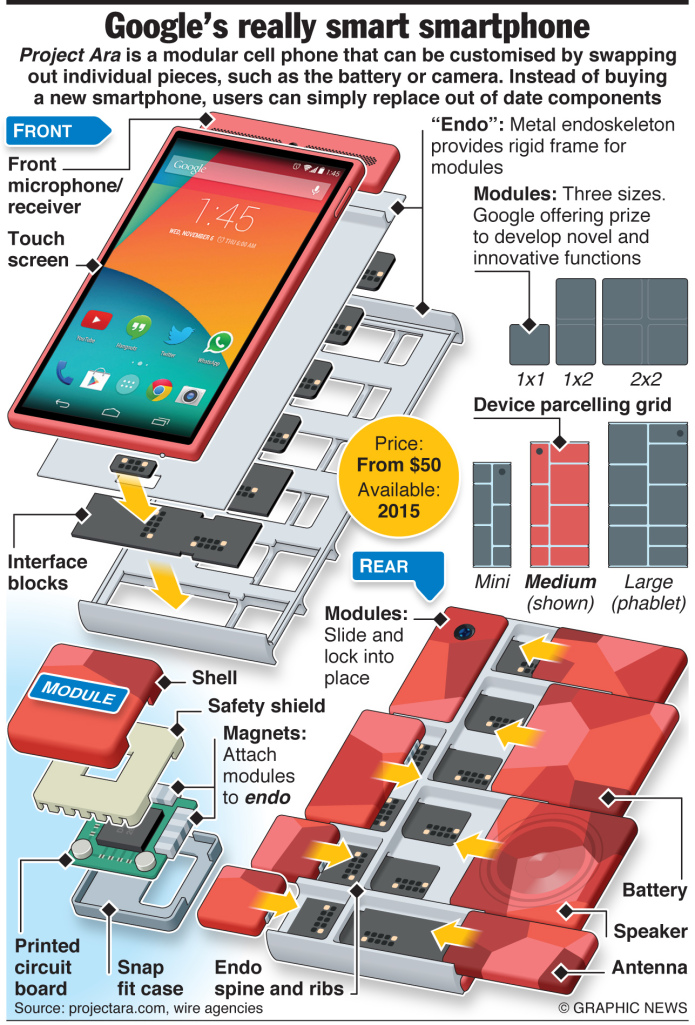The concept of modular hardware is not something new and has been proposed multiple times in different categories. There are the block designs for desktop computer systems that would allow easy upgrades by simply replacing modules. The Project Ara phones are essentially the same. The concept depends upon the ability to quickly and easily manufacture interchangeable electronic components that could be easily changed out from a base structure or endoskeleton as Motorola is calling it.
Probably the best aspect of this project is the ability to have phones quickly and easily repaired or upgraded by the consumer. If the screen breaks, just order a new Endo that houses the display and swap the modules over to it. Need a faster processor, more memory or a better camera, just remove the existing module and replace it with the new one.
Of course there are many concerns with such a system as well. Durability of the designs would probably be a major one. Modules need to be able to stay in place so that they don’t come unplugged simply by taking a phone in and out of a bag or pocket. In addition, the extra gaps generated by the modules and frame would need to be secure enough to prevent dust or moisture from getting into it such that the environment could damage the circuitry.
To try and further the project along, Motorola is currently seeking volunteers for its program to help shape what the project will ultimately become. Those that sign up for the system need to have an Android or iPhone device to use with the dscout app which is used for the collaboration. Motorola expects the collaboration to run from six months to a year.


